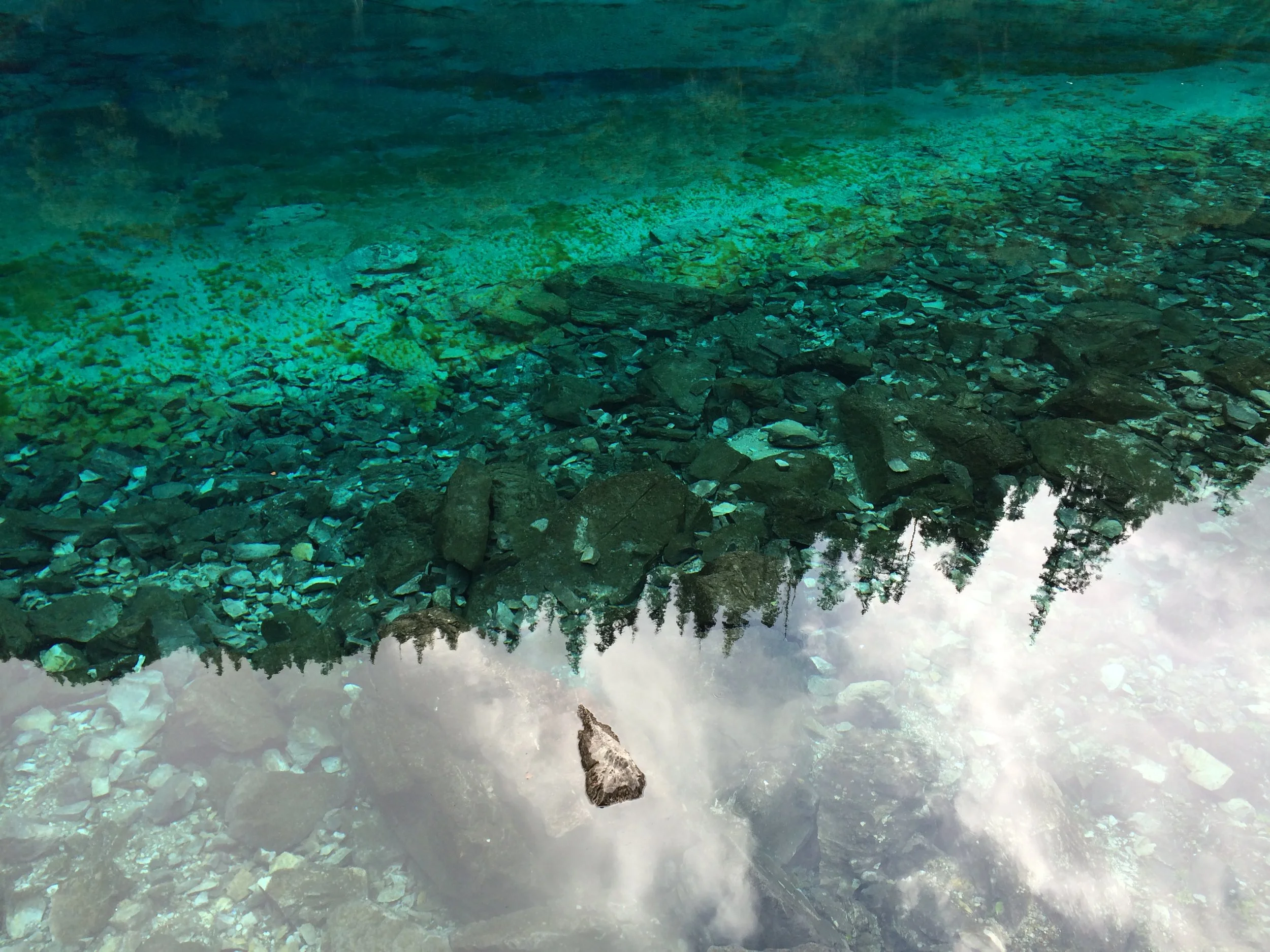So now what? What’s next? What’s missing? What can we create?
This is one of my all-time favorite photographs I have ever taken. I love it because how it opens up different ways of thinking and looking at something that has a physical existence in this world. It is hard to tell where one thing begins and ends, what is actually there and what is a reflection. This is the original photograph, unedited in any way. No filters!
This is only the beginning…
This curricular project can go in many different directions. I had started with a vague notion of what I wanted to accomplish, and I “end” here with more questions than solutions or resources. To say the least, this has been a process for me, and an enriching, eye-opening, and thought-provoking one too! My gut feeling tells me there is something here for me to pursue further, but I haven’t quite figured out what the next concrete steps are that I should take. There is no guide for me to follow, no template to fill in, so I’m leaving this path open and reaching out to you, my reader, to share with me how you are interpreting this curricular project, what questions you now have, what you find intriguing or just nonsensical, and what is still irking you…
Let me guess… if you are a science teacher, you are bothered by the fact that I did not include any concrete labs or experiments beyond the diffusion demonstration video that I quite literally inverted. You are asking yourself, what is science without science lab? What is science class without lab reports? What am I going to do with my students during lab period? I feel you. As a former biology and chemistry teacher, labs ran the show. They anchored my units of instructions. They were the heart of “doing science.” Even with the new “Next Generation Science Standards” (which I am a fan of, since they move us in a good direction, though not the only direction), the “storylines” (NGSS jargon) are largely written with lab experiments/experiences in mind. With NGSS, we have expanded our thinking about science education quite a bit, but we are still confining ourselves to a box, just a larger box.
The questions on my mind…
So what is beyond this box, you ask? To be honest, I am not entirely sure, but this question is on my mind and I will ponder longer. For now, my answer comes in the form of a series of questions on mind:
What is the purpose of labs? Do you ask students to perform labs so that they can get practice with “the scientific method”—a notion from who knows what age? Are labs a way for students to learn “valuable scientific skills”? What are these skills? And who decides which skills are valuable and considered “scientific”?
Why do we center labs in science education? Is it because it merges science content (theory) with experience (practice), connecting something we read in textbooks/from lecture notes with something more “real”?
How do educators define a “science lab”? Does it consist of something to be carried out in a laboratory? If so, what is a laboratory? What are the components of one? What are the non-negotiables? Do educators all agree on what a lab space entails? What if a school does not have the funding for a legitimate physical lab space—are the students in that school missing out on a proper science education?
How do science labs provide students with an authentic experience of “doing science”? What was the most memorable science lab you have participated in as a student, and as a teacher? What are some aspects of the experience that made it stick with you, that left an impression in your mind?
How else can we provide these authentic, “sticking,” and impressionable experiences outside of prescriptive “cookbook” labs?
Should we rid of labs all together? If not, what aspects do we value the most about science labs, and why? This is an essential we must ask ourselves as educators and curriculum developers. If what labs offer are new experiences, what else could our students experience as learners? If what we value about lab experiences is independent thinking, what else would foster that? If we care about collaboration, what else could students collaborate on and how else could they work together? If what we deem important is problem solving, what are some real pressing issues that our school, our society, our country, our world is currently facing? They may not come up with solutions yet, but at least this will get them thinking…
There is no “right” way…
I was serious when I wrote I had many questions. If there is one main concept queer theory has taught me, it is that there is no “right way” to do something, think about something, or be someone. Even “real scientists” are out there trying to figure it all out. They struggle, they fail, they question, they debate, but they keep going to find that innovative spark. As a scientist by training, I have learned a lot but three ideas have stuck with me and that continue to inspire me:
Accidents can be productive.
Failures can be generative.
Things that don’t belong anywhere yet have great potential—they should be pursued!
As someone caught in the in-between space of being a student/teacher, biologist/chemist, artist/scientist, outsider/insider, uncomfortable/comfortable… I often find myself in #3 above. So I guess that means I have potential, so pursue me! Please reach out and let’s connect and puzzle through this together.
Curiously yours,
Catherine Cheng
